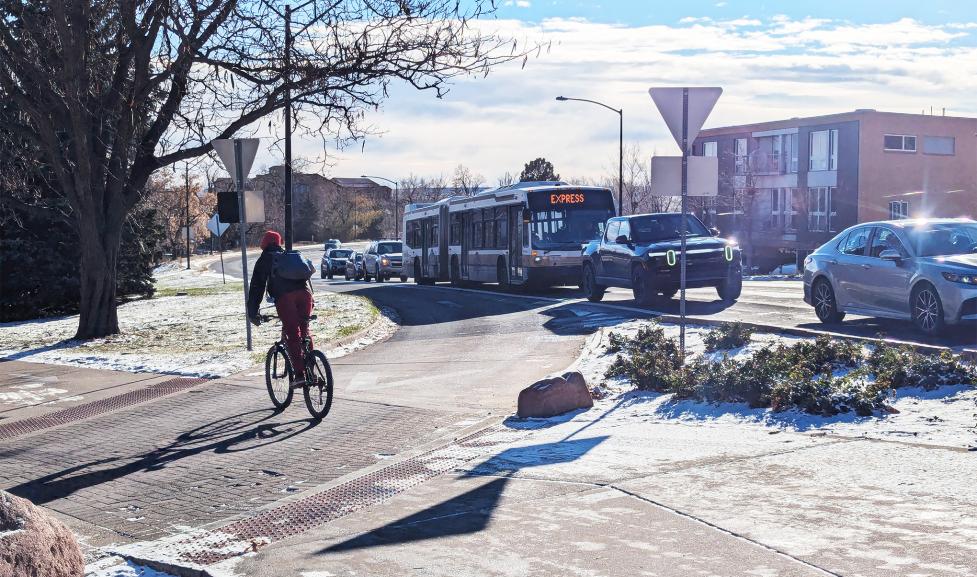Project Overview
Broadway is a key local and regional transit corridor where over 12,000 people travel by bus daily. During peak traffic hours, traffic congestion prevents reliable transit travel times, including a greater delay at the Table Mesa Drive intersection for left-turning buses than for any other vehicle.
To reduce bus delays and significantly improve travel time and reliability, this project will:
- Add short segments of dedicated bus lanes to allow buses to bypass traffic queues at two intersections: Broadway and Regent Drive, and Broadway and Table Mesa Drive. There will be no impact to the number of regular vehicle lanes.
- Design and install additional safety and accessibility improvements for all travelers at these two key intersections.
- Separately, the project will also study the feasibility of repurposing the outside or right-most vehicle lanes to bus lanes within the project limits by analyzing traffic operations and transit travel time savings. Resulting recommendations and timing would be a separate potential project dependent on study results and available funding.




